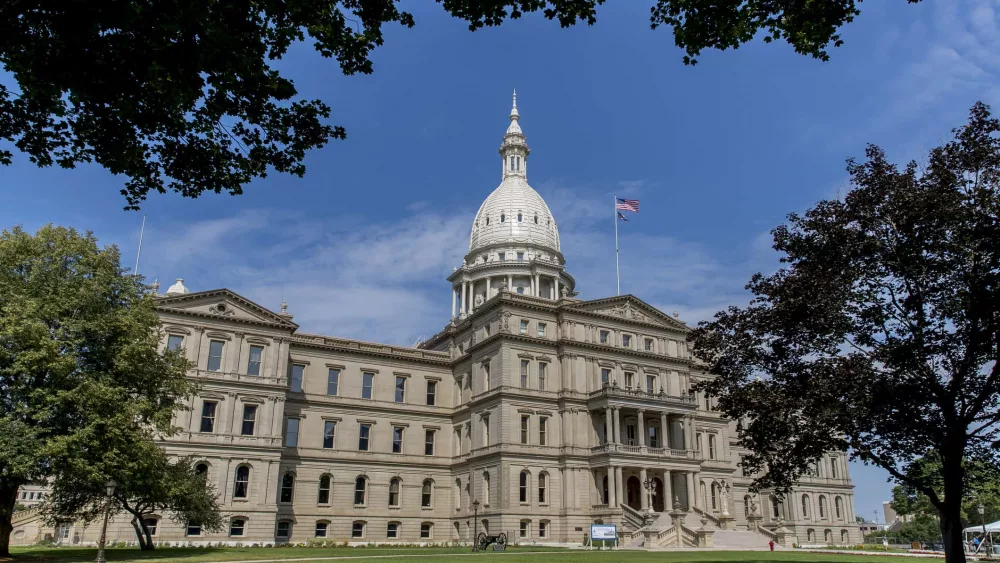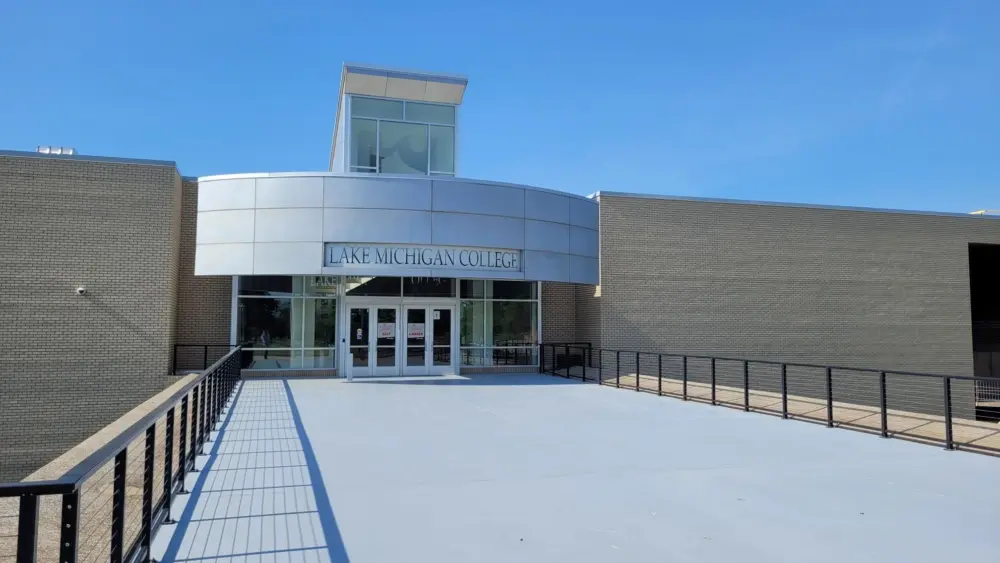When you put rising personal incomes together with falling unemployment rates, the regular Consensus Revenue Estimating Conference in Michigan becomes considerably upbeat. That was the case this morning with new dollars hitting the bottom line in Lansing.
State Treasurer Nick Khouri, State Budget Director John Walsh, Senate Fiscal Agency Director Ellen Jeffries and House Fiscal Agency Director Mary Ann Cleary today reached consensus on economic and revenue figures for the remainder of Fiscal Year (FY) 2018 and for the upcoming 2019 and 2020 fiscal years.
Following today’s Consensus Revenue Estimating Conference, net FY 2018 General Fund-General Purpose (GF-GP) revenue is projected at $10.46 billion, up $155.9 million from estimates agreed to in January. Net FY 2018 School Aid Fund (SAF) revenue is now estimated at $13.24 billion, up $159.5 million from January. Combined, GF-GP and SAF estimates are up approximately $315 million for FY 2018.
State Treasurer Nick Khouri says, “Today’s agreement is another indication of the continued progress of the Michigan economy. Revenues are up because unemployment is down and incomes are rising.” Khouri adds, “The policies of the last seven years have created a framework for economic growth, budget surpluses and paying down long-term debt. Michiganders should feel good about the direction the state is headed.”
Net GF-GP revenue for the FY 2019 — which begins Oct. 1 — is now forecasted at $10.41 billion, up $72 million from January’s estimate, while the FY 2019 SAF revenue estimate has been revised up by $110.4 million to an estimated $13.57 billion.
In FY 2020, GF-GP revenue has been revised up $105.2 million at $10.52 billion and SAF revenue has been revised up $78.1 million to $13.9 billion.
The revision to the GF-GP forecast is driven by strong income tax collections in FY 2018, which the forecast committee attributes to one-time growth and believes will slow in FY 2019. The higher SAF results from higher sales tax, income tax, lottery and state education property tax forecasts.
State Budget Director John Walsh says, “With the revenues that were agreed upon today, we now have an accurate and agreed upon revenue forecast on which to enter into target setting to finish our work on the 2019 budget.” Walsh adds, “I have no doubt that this budget will be signed in early June, making it 8 for 8 when it comes to getting budgets done early during the Snyder administration.”
These revenue estimates are based on the most recent economic projections and forecasting models. As with any economic and revenue forecasts, there are potential risks to the estimates agreed to today, including national economic trends, international economic issues, and a significant change in oil and gasoline prices.
Gov. Rick Snyder issued the following statement on the consensus reached this morning:
“Projected increases in revenue for both the General Fund and School Aid Fund demonstrate Michigan’s continued economic growth and our fiscal responsibility over the past seven years.” He adds, “We should be encouraged by the state’s progress and positive economic outlook, while remembering the importance of showing financial responsibility to current and future generations. I look forward to working with my legislative partners to get the budget done responsibly by next month, giving municipalities and schools ample time to plan their own budgets. As we finalize spending decisions, I plan to remain focused on sustaining record investments in K-12 education, improving our roads, building up the Rainy Day Fund, and implementing the Marshall Plan for Talent.”
Reaction was swift on several fronts.
The Michigan League for Public Policy issued the following statement from its President & CEO Gilda Z. Jacobs on the revenue projections today:
“Learning that there is more revenue available in the budget gives us hope that lawmakers will take this opportunity to invest in what they’ve failed to adequately support in recent years: our kids.
The false notion that everyone in our state has rebounded from the great recession continues to keep Michigan’s children behind. Kids living in poverty are more likely to have poor nutrition, live in unsafe conditions and have less success in school. The 2019 budget proposals seem to ignore these facts and will cause our children to lose even more potential.
Family Independence Program (FIP) grants have not seen a significant increase since 1996 and we were pleased that the governor was willing to make a small inflationary increase. But that increase was entirely inadequate given the erosion of purchasing power for families receiving FIP. Adding insult to injury, the Legislature couldn’t even agree to that small increase. Eight out of 10 FIP recipients are kids. Refusing to set aside additional funding for children and families shows us where the Legislature’s priorities are—or where they are not. According to our Kids Count report, 1 in 5 kids in Michigan lives in poverty. Instead of helping these children thrive, the Legislature has pushed strict lifetime limits on FIP and created sanctions for entire families based on just one child’s absences. Fewer kids are getting help today with basic needs like food, shelter and clothing than they were in the late 1950s.
We know that education is key to helping kids thrive, so we also hope this increased revenue will result in more funding for early literacy programs to improve third grade reading proficiency. No new significant funding is being directed to early literacy programs despite the state’s third grade reading law. Instead of holding kids back in third grade, why can’t we help lift them up when they are young and developing the skills they need to learn to read?
The At-Risk School Aid program, which has received increases in recent years, is still not fully funded, and Kids Count data show that children are being held back from academic success because of their economic situation, inadequate housing, poor nutrition and struggling schools. The consequences of this lack of funding further threaten children of color, who already face inequities resulting from years of limited opportunities.
We are hopeful that our leaders will reflect on the options they have with this revenue and make the right investments for Michigan.”
Following today’s budget announcement and the revelation of an estimated $300 million surplus, a coalition comprised of Michigan’s top law enforcement and education groups urged lawmakers to invest in a bipartisan plan to prevent violence in the classroom. The coalition supports a recently introduced legislative package, led by State Rep. Aaron Miller (R-Sturgis), and modeled after a proposal announced in late March.
They argue that the Michigan School Safety Reform Plan is based on clear, actionable strategies that are both effective and immediately achievable.
Berrien County Sheriff Paul Bailey is President of the Michigan Sheriff’s Association. He says, “Nothing is more important than the safety of Michigan’s children.” Bailey adds, “The budget surplus announced today should be put to use preventing violence in Michigan schools.”
The Michigan School Safety Reform Plan calls for a new state grant program for personnel, a grant program for safety infrastructure, and other reforms, including:
- More school resource officers—sheriffs and police—working in school facilities through a new state grant program;
- More school mental health professionals to identify problems early through the same new state grant program;
- Grants to ensure safer buildings for students and teachers; and
- Mandatory reporting of threats and graduated penalties to help prevent violence.
Meanwhile, Michael Rochholz, President of the Michigan Association of School Boards says, “Giving schools the resources needed to update security in school buildings or putting more school resource officers on school property will help to keep our children safe and help prevent tragedies before they happen.” Rochholz adds, “We also need to increase the ratio of school counselors and social workers to help assist with early intervention.”
Currently, Michigan’s student to school counselor ratio is roughly 750-to-1. The student to school social workers ratio is 1,000-to-1. The student to school psychologist ratio is roughly 4,800-to-1. All ratios are well below recommended levels.
The plan also calls for improved reporting of school safety threats.
Mark Reene is Tuscola County Prosecutor and Past President of the Prosecuting Attorneys Association of Michigan. He says, “Our schools have experienced a significant increase in the number of school threats.” He adds, “Prosecutors are committed to protecting students, teachers, administrators and the communities that support them. There are very serious consequences for making any type of threat. Whether it requires punitive sanctions or mental health services, this new legislation will give the needed tools to help us all address these threats and help keep schools safe.”
The Michigan School Safety Reform Plan is made up of House Bills 5942, 5966, and 5967 is backed by all of the following agencies:
- Michigan Sheriffs Association
- Michigan Association of School Administrators
- Michigan Association of School Boards
- Michigan Association of School Psychologists
- Michigan Association of School Social Workers
- Michigan School Counselors Association
- Michigan Association of Chiefs of Police
- Prosecuting Attorneys Association of Michigan






